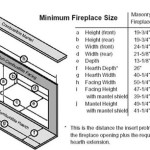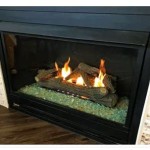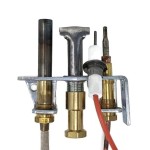Propane Freestanding Fireplace Stoves: A Comprehensive Overview
Propane freestanding fireplace stoves offer a versatile and efficient heating solution for a variety of residential and commercial spaces. Unlike traditional wood-burning stoves, propane models provide a consistent and controllable heat source, while also presenting a visually appealing aesthetic. These appliances combine the ambiance of a fireplace with the convenience of gas power, making them a popular choice for supplementary heating or zone heating.
The design of a propane freestanding fireplace stove typically includes a cast iron or steel firebox, ceramic logs to imitate the appearance of a real wood fire, and a glass viewing window to observe the flames. The units are self-contained and designed to sit directly on the floor, requiring minimal installation complexity compared to built-in fireplaces or wood stoves that necessitate extensive venting systems. Propane stoves vent directly through an exterior wall or roof with a special vent pipe, making them easier to install in existing structures. The fuel source, propane, is generally stored in an external tank, which is connected to the stove via a gas line.
Functionally, a propane freestanding fireplace stove operates by burning propane gas within the firebox. The heat generated warms the surrounding air, which then circulates through the room via convection and radiation. Many models feature a built-in blower fan to further enhance air circulation and distribute heat more evenly throughout the space. Thermostatic controls allow users to regulate the heat output, maintaining a comfortable temperature. Advanced models may incorporate programmable thermostats or remote controls for enhanced convenience and energy efficiency.
The selection of a suitable propane freestanding fireplace stove involves considering several factors, including heating capacity, aesthetic preferences, safety features, and cost. Understanding these aspects will facilitate a well-informed decision, ensuring that the chosen stove effectively meets the homeowner's heating needs and complements the existing décor.
Heating Capacity and Efficiency
The heating capacity of a propane freestanding fireplace stove is typically measured in British Thermal Units (BTUs). A BTU represents the amount of energy required to raise the temperature of one pound of water by one degree Fahrenheit. The appropriate BTU rating for a stove depends on the size of the space it is intended to heat. A larger room will require a stove with a higher BTU rating to effectively maintain a comfortable temperature.
Manufacturers provide guidelines on the square footage a particular stove model can adequately heat. However, these recommendations are often based on ideal conditions, such as well-insulated walls and ceilings. In older homes or structures with poor insulation, a higher BTU rating may be necessary to compensate for heat loss. Consulting with a qualified HVAC professional can provide a more accurate assessment of heating needs based on the specific characteristics of the space.
Energy efficiency is another crucial consideration. Propane stoves are rated for their annual fuel utilization efficiency (AFUE), which indicates the percentage of fuel that is converted into usable heat. A higher AFUE rating signifies greater efficiency and lower operating costs. Modern propane stoves often achieve AFUE ratings of 70% or higher. Factors such as the quality of construction, the burner design, and the presence of a blower fan can all influence the overall efficiency of the stove.
Stoves with modulating burners provide enhanced efficiency by automatically adjusting the flame height based on the room's temperature. This feature prevents the stove from overheating the space and wasting fuel. Similarly, programmable thermostats allow users to set specific heating schedules, further optimizing energy consumption.
When evaluating heating capacity and efficiency, it is essential to consider the local climate. Homes in colder regions will generally require stoves with higher BTU ratings and potentially higher AFUE ratings to effectively combat the colder temperatures. A careful assessment of these factors will ensure that the chosen stove provides adequate and cost-effective heating.
Aesthetic Design and Features
Propane freestanding fireplace stoves are available in a wide array of designs to suit diverse aesthetic preferences. Traditional models often feature a classic cast iron exterior with intricate detailing, mimicking the appearance of antique wood-burning stoves. These stoves can add a touch of rustic charm to a room and complement traditional décor styles.
Contemporary stoves, on the other hand, tend to have a sleeker and more minimalist design. They may feature a steel or ceramic exterior with clean lines and modern finishes. These stoves are well-suited for contemporary homes and can create a sophisticated and understated ambiance.
The appearance of the flame is another important aesthetic consideration. Some stoves feature realistic ceramic logs that closely resemble natural wood. Others may offer alternative media, such as glass beads or stones, for a more modern look. The flame height and intensity can often be adjusted to create different visual effects.
The viewing window is a prominent feature of most propane freestanding fireplace stoves. A larger window provides a broader view of the flames, enhancing the ambiance of the stove. Some models feature a self-cleaning glass system that helps to keep the window clear and free of soot and residue. This feature reduces the need for manual cleaning and ensures a consistently clear view of the fire.
Additional features that can enhance the aesthetic appeal of a propane stove include accent lighting, decorative trim, and a variety of finish options. Some models also offer optional accessories, such as a hearth pad or a remote control, that can further customize the stove's appearance and functionality. Selecting a stove that complements the existing décor and reflects personal preferences is crucial for creating a visually appealing and comfortable living space.
Safety and Installation Considerations
Safety is paramount when selecting and installing a propane freestanding fireplace stove. All propane stoves should be certified by a recognized testing agency, such as the Canadian Standards Association (CSA) or Intertek (ETL). This certification indicates that the stove has been tested and meets established safety standards.
Proper installation is crucial for ensuring the safe and efficient operation of a propane stove. It is strongly recommended that a qualified HVAC professional or licensed gas fitter perform the installation. This will ensure that the stove is properly connected to the propane supply, vented correctly, and meets all applicable building codes and safety regulations.
Propane stoves require proper venting to exhaust the byproducts of combustion safely outside the home. The venting system must be installed according to the manufacturer's instructions and local building codes. Incorrect venting can lead to carbon monoxide poisoning, a potentially fatal hazard. Regular inspection and maintenance of the venting system are essential for ensuring its continued safe operation.
Carbon monoxide detectors are mandatory in homes with propane appliances. These detectors provide an early warning of carbon monoxide buildup, allowing occupants to evacuate the premises and seek medical attention. The detectors should be installed in accordance with the manufacturer's instructions and tested regularly to ensure they are functioning properly.
Clearance requirements are another important safety consideration. Propane stoves must be installed with adequate clearance from combustible materials, such as walls, furniture, and draperies. The manufacturer's instructions will specify the minimum clearance distances required. Failure to maintain adequate clearance can increase the risk of fire.
Regular maintenance is essential for ensuring the continued safe and efficient operation of a propane stove. This includes cleaning the burner, inspecting the venting system, and checking for any signs of leaks or damage. A professional inspection by a qualified technician is recommended annually to ensure that the stove is operating safely and efficiently.
In addition to these safety considerations, it is important to understand the proper operation of the propane stove. Read and follow the manufacturer's instructions carefully. Never attempt to modify or repair the stove yourself. If you have any questions or concerns about the stove's operation, consult with a qualified professional.
By prioritizing safety during the selection, installation, and operation of a propane freestanding fireplace stove, homeowners can enjoy the warmth and ambiance of a fireplace without compromising their safety or the safety of their families.

Freestanding Gas Burning Stoves Sierra Hearth And Home

Propane Freestanding Stoves From Stewart S Hearth In Miramichi

Freestanding Gas Stoves Friendly Fires

Freestanding Gas Stoves Stove Fireplaces Napoleon

Natural Gas Propane Freestanding Stoves

Enviro S Series Freestanding Gas Or Propane Fireplace Fireplaces By Cameron

32 000 Btu Vent Free Cast Iron Liquid Propane Gas Stove Agc500vflp The Home Depot

Enviro Catalogue

Kingsman Fvf350 27 Inch Millivolt Ignition Freestanding Vent Free Gas Stove With Log Set

Propane Freestanding Stoves From Stewart S Hearth In Miramichi
Related Posts








